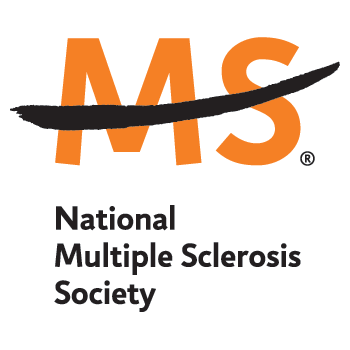Common Mechanisms of Autoimmunity
Novel Approaches for Therapeutic Insights
Breakthrough T1D (formerly JDRF), the Lupus Research Alliance, and the National Multiple Sclerosis Society have joined forces to identify common mechanisms of autoimmunity. These three leading autoimmune disease organizations are once again jointly funding research projects looking at common underlying disease mechanisms.
LEARN MORE
ABOUT THE GRANTS
Breakthrough T1D, the Lupus Research Alliance, and the National Multiple Sclerosis Society joined forces to accelerate research and discovery in autoimmunity and are proud to launch the 2025 Common Mechanisms in Autoimmunity grants.
Approximately 10% of the population has been diagnosed with an autoimmune disease (13% of women and 7% of men). While disease-specific research organizations study therapeutic strategies related to their autoimmune disease of interest (protection or elimination/blocking of target cell/tissue, stress responses, regenerative medicine), there are common approaches each is investigating to identify risk and rebalance the immune system in the context of autoimmunity:
- Genetic Susceptibility
- Autoantibody Activity
- Defective Negative Selection
- Enhanced Effector Activity
- Reduced Regulatory Capacity
- Inflammatory Signaling
- Environmental Triggers
25% of individuals with an autoimmune disease will likely develop a second autoimmune disease.
FULL GRANT DETAILS
Purpose
Breakthrough T1D, the Lupus Research Alliance, and the National Multiple Sclerosis Society will solicit grant proposals from investigators across autoimmune and other relevant fields to advance the understanding of autoimmunity and to obtain more specific insights into commonalities and differences of immune pathways that govern these disease processes.
The incomplete knowledge of immune networks, pathways, disease pathogenesis and heterogeneity across multiple autoimmune diseases remains a challenge towards achieving optimal therapies. This grant program invites innovative ideas that address needs across multiple autoimmune diseases in novel ways that may allow us to make faster progress together.
Objective
The overall objective of this program is to develop novel insight into the common mechanisms driving autoimmune diseases and accelerate the advancement of novel therapeutics strategies.
Scope
- Bring together investigators across autoimmune fields to advance the overall understanding of autoimmunity.
- Obtain more specific insights into commonalities and differences of immune pathways that govern disease processes.
- Fill gaps in the knowledge of immune networks, pathways, disease pathogenesis and heterogeneity across multiple autoimmune diseases to promote advancement towards achieving optimal therapies.
- Support the discovery and development of pan- or multi-autoimmune therapeutic strategies.
Projects selected for joint funding represent innovative ideas that address needs across multiple autoimmune diseases in novel ways that allow us to accelerate progress together.
Background
Autoimmune diseases are chronic disorders in which the immune system produces an inappropriate response against its own cells, tissues and/or organs that results in inflammation and damage. An incomplete knowledge of disease pathogenesis and heterogeneity among patients is very common in many autoimmune diseases, representing a real challenge that impacts the effectiveness of clinical trial design and the ability to predict whether a person will respond to a given treatment.
Grant Mechanism
Insight Award:
- 1-year pilot grant to investigate a mechanism underlying autoimmune disease, identify novel targets or mechanisms, or provide proof of concept for an innovative therapeutic strategy.
- Proposals considered must address a gap or need relevant to multiple autoimmune diseases and must be relevant toward at least two of the following:
- Multiple Sclerosis
- Systemic Lupus Erythematosus (or one of its manifestations)
- Type 1 Diabetes
- The goal of the Insight Award mechanism is to provide proof-of-concept data for novel insights into autoimmunity, and to serve as a vehicle by which to provide the rationale for assembling an Accelerator Award project team.
- First announcement of funding opportunity: Summer 2026
- Funding amount: Up to $150K (includes 10% indirect)
2025 Insight Award Recipients

Elena Hsieh, MD
University of Colorado
Anschutz School of Medicine
Mechanisms of B Cell Polyreactivity in Autoimmunity: Toward Precision Immunotherapy
Our immune system works tirelessly to protect us from harmful infections by producing special proteins called antibodies. These antibodies are made by immune cells called B cells, which are essential for fighting off viruses and bacteria. However, sometimes B cells can mistakenly attack the body’s own tissues, leading to autoimmune diseases like lupus, type 1 diabetes, and multiple sclerosis. Scientists have discovered that certain B cells can recognize and bind to many different substances, including those found in both harmful pathogens and healthy tissues. This ability, known as “polyreactivity,” can help fight infections but may also increase the risk of autoimmunity. While our bodies have checkpoints to prevent B cells from attacking our own tissues, these safety mechanisms do not always work perfectly. Recent research shows that understanding how B cells behave and how these checkpoints fail could lead to better treatments for autoimmune diseases. By studying rare genetic conditions and using advanced technologies to analyze B cells, researchers hope to identify why some people develop autoimmunity and how to stop it. This work could pave the way for more personalized treatments, improving the lives of those affected by autoimmune diseases.

Aly Khan, PhD
University of Chicago
Dissecting HLA Mechanisms in T1D, SLE, and MS Through High-Throughput Self-Antigen Profiling
Autoimmune diseases – such as type 1 diabetes (T1D), systemic lupus erythematosus (SLE), and multiple sclerosis (MS) – affect millions worldwide. Although these diseases manifest differently – attacking distinct tissues like the pancreas in T1D, connective tissues and organs in SLE, or the nervous system in MS – these disorders share a surprising common thread: strong genetic associations within the human leukocyte antigen (HLA) system. HLA class II proteins normally show fragments of proteins (peptides) to immune cells, helping the body distinguish friend from foe. But certain HLA variants appear to present “self-peptides” in harmful ways, triggering chronic immune attacks on the body’s own tissues. To uncover why some HLA alleles increase risk while others offer protection, we will use a cutting-edge yeast display platform. This approach lets us systematically screen millions of human protein fragments, revealing which ones latch onto “risk” versus “protective” HLA molecules. Next, we will apply advanced computer models—called protein language models—to understand the structural “grammar” of these interactions. By doing so, we can predict which peptides are most likely to incite damaging immune responses or promote tolerance. Finally, we will delve into single-cell RNA sequencing data to pinpoint the tissues and cell types that generate these critical peptides, offering insight into why the immune system might become overactive in T1D, SLE, or MS. Ultimately, our work aims to move beyond generic immune suppression by spotlighting the precise peptides that drive autoimmunity – or block it. Such knowledge will pave the way for highly targeted therapies that interrupt pathogenic pathways without compromising healthy immune function. In clarifying the role of selfpeptides in disease, we will chart a path toward more personalized and effective treatments that benefit patients across a range of autoimmune disorders.

Kelsey Voss, PhD
University of Virginia School of Medicine
Anti-CD71 immunotherapy to restore T cell homeostasis in autoimmunity
The transferrin receptor, CD71, is a receptor that brings iron into cells. The immune cells known as T lymphocytes (T cells) also rely on CD71 for iron, which they use for different metabolic processes. My previous work has shown that different types of T cells rely on this receptor for different reasons. By targeting or “blocking” the receptor with an antibody, we can limit the pro-inflammatory types of T cells and give a boost to the anti-inflammatory T cells. This method of immunotherapy was successful in mouse models of system lupus erythematosus (SLE), and may have similar benefits in other autoimmune diseases including type 1 diabetes (T1D) and multiple sclerosis (MS). Although there is evidence that CD71 and iron metabolism is dysregulated in T cells in patients with SLE, validation of patient samples with these other diseases needs to be done. Thus, this pathway could be a common target to multiple diseases that would benefit from anti-CD71 immunotherapy. We vaccinated an alpaca with human CD71 receptors to discover human-specific versions of antibodies that could accomplish this in people. Alpacas also make a smaller type of antibody known as nanobodies that are highly stable and can cross the blood-brain barrier. In this proposal, we will test the anti-CD71 nanobodies we discovered from this alpaca in mouse models of autoimmune disease.

Gary Reynolds, MBBS, PhD
Massachusetts General Hospital
Understanding common tissue tolerance mechanisms in autoimmunity
Autoimmune diseases often exhibit a puzzling pattern: although harmful immune responses target molecules (autoantigens) found throughout an organ, the resulting inflammation tends to occur in patches rather than affecting the entire organ evenly. For example: In type 1 diabetes, only about 20% of insulin-producing areas (islets) show inflammation, while surrounding tissue looks normal. In cutaneous lupus, the rash occurs in clearly defined areas surrounded by normal skin. We see patchy inflammation in many other autoimmune diseases like psoriasis, ulcerative colitis, giant cell arteritis, and atopic dermatitis. However, the exact mechanisms behind this remain unclear. A key question is what is happening at the boundary between inflamed and unaffected tissue. In response to infections, the immune system carefully balances clearing the threat while preventing excessive inflammation to avoid damaging tissues. We think a similar balance occurs in autoimmune diseases: while some areas show active inflammation, nearby tissues (called perilesional tissue) are partly protected. The mechanisms that protect this perilesional tissue are responsible for the patchy pattern of inflammation we see. In these regions the immune system isn’t entirely normal – it shows a milder form of the immune activity seen in the disease. However, these boundary areas seem to strike a balance that suppresses inflammation and protects the tissue from further harm. In conditions like type 1 diabetes, this protective balance can eventually fail, leading to significant damage to the pancreas and the loss of insulin-producing cells. The same occurs in other autoimmune diseases like Sjogren’s syndrome (causing dry eyes and dry mouth) and Hashimoto’s thyroiditis (causing hypothyroidism). In other autoimmune conditions like systemic lupus erythematosus, rheumatoid arthritis and vasculitis inflammatory varies in intensity over time. Individuals experience periods of remission interspersed by flare. During periods of remission we think that, rather than tissues returning completely to normal, similar protective mechanisms keep inflammation settled. We would like to understand these protective mechanisms. This is essential to prevent organ damage and preserve function or to keep disease in remission. If we understood them better we may be able to boost them in people at risk of autoimmune disease to avoid tissue damage or make sure that the disease remains settled. We propose two different ways to examine this: Single-cell RNA sequencing (scRNAseq): This is a technique that looks at what individual cells are making (RNA). We can use this to tell us what a cell is and what it is doing. This has been used in many autoimmune diseases before although not to answer this specific question. Much of this data is available for researchers to reuse. We will use this to look at perilesional tissue and healed tissue in multiple diseases and look for common patterns. Spatial transcriptomics (ST): This technique uses microscope slides from tissue to measure what a cell is making (RNA). The advantage of this approach is that we also know where the cell is in tissue and can see how close it is to areas of inflammation. We aim to use this to identify the mechanisms that maintain the protective balance in tissues. We will initially apply this approach in type 1 diabetes and lupus rashes. The ultimate goal is to uncover universal strategies that tissues use to prevent recurrent and spreading inflammation. This could lead to innovative treatments that protect tissue from damage or restore the immune balance without long-term dependency on medications.

Alok Joglekar, PhD
University of Pittsburgh
Dock2-mediated T cell migration as a targetable shared mechanism in autoimmunity
Autoimmune diseases such as Type 1 Diabetes (T1D), Systemic Lupus Erythematosus (SLE), and Multiple Sclerosis (MS), are caused by immune system attacking the patient’s own organs. In patients with these diseases, immune cells including killer T cells, helper T cells, and antibody producing B cells enter the organs and cause their destruction. A promising strategy to treat autoimmune diseases is to block the movement of immune cells that is required to enter normal tissue prior to destruction. Our preliminary studies have suggested that a key molecule called DOCK2 is responsible for mediating immune cell infiltration into tissues. In this proposal, we will test whether DOCK2 is a suitable therapeutic target to treat autoimmune diseases, including T1D, SLE, and MS. We will use mouse models of these diseases to test if small molecule inhibitors of DOCK2 can block infiltration of immune cells into tissues, thereby preventing and/or delaying autoimmunity. We will also analyze publicly available patient datasets to evaluate if this pathway is active in tissues affected by the autoimmune diseases. If successful, our research will establish DOCK2 as a target for developing novel therapies to treat multiple autoimmune diseases.

Stuart Mannering, PhD
St. Vincent’s Institute Medical Research
Monitoring CD4+ T-cell responses in T1D, MS and SLE
Autoimmune diseases develop when the immune system mistakenly attacks healthy parts of the body. Despite much research, we don’t understand how the immune system makes this ‘mistake’. Consequently, autoimmune diseases remain poorly treated. Autoimmune diseases share many immunological features which point towards a central role of a type of immune cell, called a CD4+ (aka helper) T cell. A CD4+ T cell’s job is to ‘manage’ the immune response by guiding the function of many other immune cells. Usually, CD4+ T cells guide our immune systems to protect us from infectious agents and cancer. However, when an autoimmune disease develops it is also the CD4+ T cells that lead the development of the autoimmune disease. Despite the key role of the CD4+ T cells in guiding immune responses, it has been very difficult to measure them. Broadly speaking, each CD4+ T cell ‘sees’ a different target (which we call an antigen) and can only drive an immune response once they have ‘seen’ that antigen. Since we’re interested in autoimmune diseases, we want to measure only the CD4+ T cells that recognize antigens from healthy tissues (called ‘autoantigens’). We face two challenges: (i) CD4+ T cells that recognize autoantigens are scarce in the blood; and (ii) it’s not always clear which autoantigens are ‘seen’ the by CD4+ T cells that cause an autoimmune disease. While researchers have developed some tests which can detect autoantigen-specific CD4+ T cells, the tests are complex, technically demanding and require large volumes of blood. This makes them unsuitable for routine clinical use. For this reason, current tests focus on measuring antibodies that bind to autoantigens (aka autoantibodies). While autoantibody tests are useful, they do not give any insights into the underlying CD4+ T-cell responses driving autoimmune diseases. We have set out to address this capability gap. We have developed a simple blood test, focusing for the moment on type 1 diabetes (T1D). This test is sensitive enough to detect the very rare autoantigen specific CD4+ T cells. Importantly, it has many advantages, it is: simple to perform, requires only a few milliliters of blood, logistically robust, and gives a measure of the number and activity of autoantigen-specific CD4+ T cells. Working with blood samples from people with, and without, T1D we have been able to optimize and validate this blood test. We can measure CD4+ T-cell responses to proinsulin, an important target in T1D. Importantly, this blood test can distinguish between people with and without T1D. Our current goal is to use our new blood test to analyze autoantigen specific CD4+ T-cell responses in three autoimmune diseases: multiple sclerosis (MS), systemic lupus erythematosus (SLE) and T1D. We aim to test a panel of autoantigens implicated in MS and SLE to determine which antigens provoke a CD4+ T-cell responses in people with these diseases. In T1D we will build on our work to examine responses to autoantigens other than proinsulin. Upon completion of this project, we will deliver a blood test that can measure autoantigen-specific CD4+ Tcell responses in MS, SLE and T1D. This will meet a long unmet need, enabling routine measurement in the clinic of autoantigen specific CD4+ T-cell responses in people with autoimmune diseases. This will allow, for the first time, the analysis of the autoimmune response which underlies the disease process. This will guide physicians in their diagnosis and care of people suffering from autoimmune diseases and be an invaluable tool for scientists seeking to understand autoimmune disease and develop safe and effective therapies to prevent or reverse these diseases.

Yoshiaki Yasumizu, MD, PhD
Yale School of Medicine
Understanding role of B cells in the pathogenesis of Type 1 Diabetes and Multiple Sclerosis
Imagine two different diseases-Multiple Sclerosis (MS) and Type 1 Diabetes (T1D)-that appear at first glance to affect completely different organs and systems. MS disrupts the central nervous system, while T1D damages the insulin-producing cells of the pancreas. Yet, despite these differences, both diseases share a common underlying problem: the body’s own immune system mistakenly attacks healthy tissue. Scientists call these disorders autoimmune diseases. In both MS and T1D, overactive immune cells drive inflammation that can significantly impact patients’ quality of life.
One type of immune cell, the B cell, has attracted considerable research attention in recent years. B cells are commonly known for their ability to produce antibodies, but emerging studies suggest they also play a crucial role in how other immune cells-especially T cells-become active against the body’s tissues. Intriguingly, treatments that target or deplete B cells have shown significant clinical benefits in both MS and T1D. This is a major clue that B cells are critical to how these diseases develop and progress.
In this project, we want to uncover the full story behind B cells’ contribution to autoimmune disease. By carefully examining the genetic factors that make someone more likely to develop MS or T1D, we can begin to piece together the complex chain of events leading to autoimmunity. Most genetic changes linked to these diseases occur in the non-coding regions of our DNA. Instead, these variations often affect how and when genes turn on or off.
Understanding these subtle shifts can help scientists identify precisely which immune functions are going awry in each disease.
Using cutting-edge single-cell RNA sequencing (scRNA-seq), we will look at B cells one cell at a time. This enables them to see exactly which genes are active in each B cell subtype and how that activity might differ in healthy people compared to those with MS or T1D. By focusing on differences at this very detailed level, we aim to explain why some people’s immune systems seem to break tolerance and start the destructive process.
Beyond merely finding these differences, the study also aims to connect these discoveries with potential new targets for therapy. Once we know which genes or pathways are crucial for triggering the harmful immune reactions, we can start to think about designing medications or interventions that specifically inhibit those pathways. For example, if a particular B cell subtype is found to be too good at “training” T cells to attack healthy tissue, blocking the signals that allow this training to happen might reduce or prevent disease.
Ultimately, this research could transform how we treat and potentially even prevent autoimmune disorders like MS and T1D. By illuminating the common immunological threads and the distinct features of each condition, the project sets the stage for new, more tailored therapies. And because both diseases share certain genetic underpinnings, understanding them side by side offers a unique chance to learn general principles of autoimmune disease that could be applied to many other conditions as well.
ABOUT AUTOIMMUNE DISEASES
Autoimmune diseases are chronic disorders in which the immune system produces an inappropriate response against its own cells, tissues and/or organs that results in inflammation and damage. Approximately 24 million Americans suffer from the more than 80 autoimmune diseases. Some autoimmune diseases target one area of the body; for instance, type 1 diabetes (T1D) affects the pancreas while multiple sclerosis damages the nervous system. In contrast, systemic lupus erythematosus can affect the entire body, attacking virtually any organ or tissue.
Insufficient knowledge of how these diseases progress as well as their heterogeneity, that is, how the disease manifests differently in people—is a common challenge among type 1 diabetes (T1D), lupus and multiple sclerosis that this grant program aims to overcome. Insight Award recipients will examine possible common mechanisms that could cause or contribute to the development of at least two of the three autoimmune diseases. Ultimately, the goal is to find novel biological targets and strategies for therapeutic development to treat the diseases
About the Partnering Organizations
As the leading global type 1 diabetes research and advocacy organization, Breakthrough T1D helps make everyday life with type 1 diabetes better while driving toward cures. We do this by investing in the most promising research, advocating for progress by working with government to address issues that impact the T1D community, and helping educate and empower individuals facing this condition.
The National MS Society, founded in 1946, is the global leader of a growing movement dedicated to creating a world free of MS. The Society funds cutting-edge research for a cure, drives change through advocacy and provides programs and services to help people affected by MS live their best lives. Connect to learn more and get involved: nationalMSsociety.org, Facebook, X (formerly known as Twitter), Instagram, YouTube or 1-800-344-4867.




